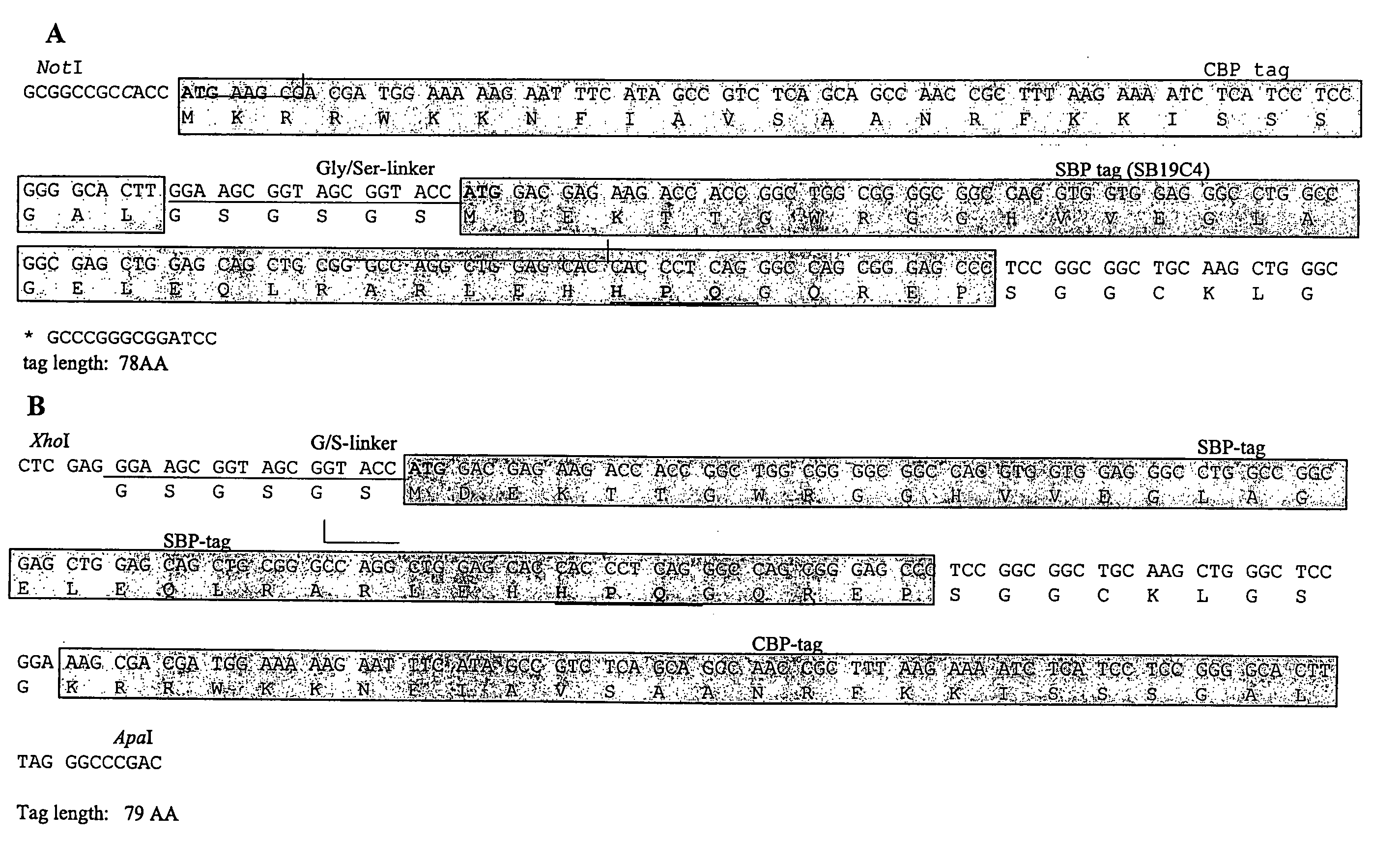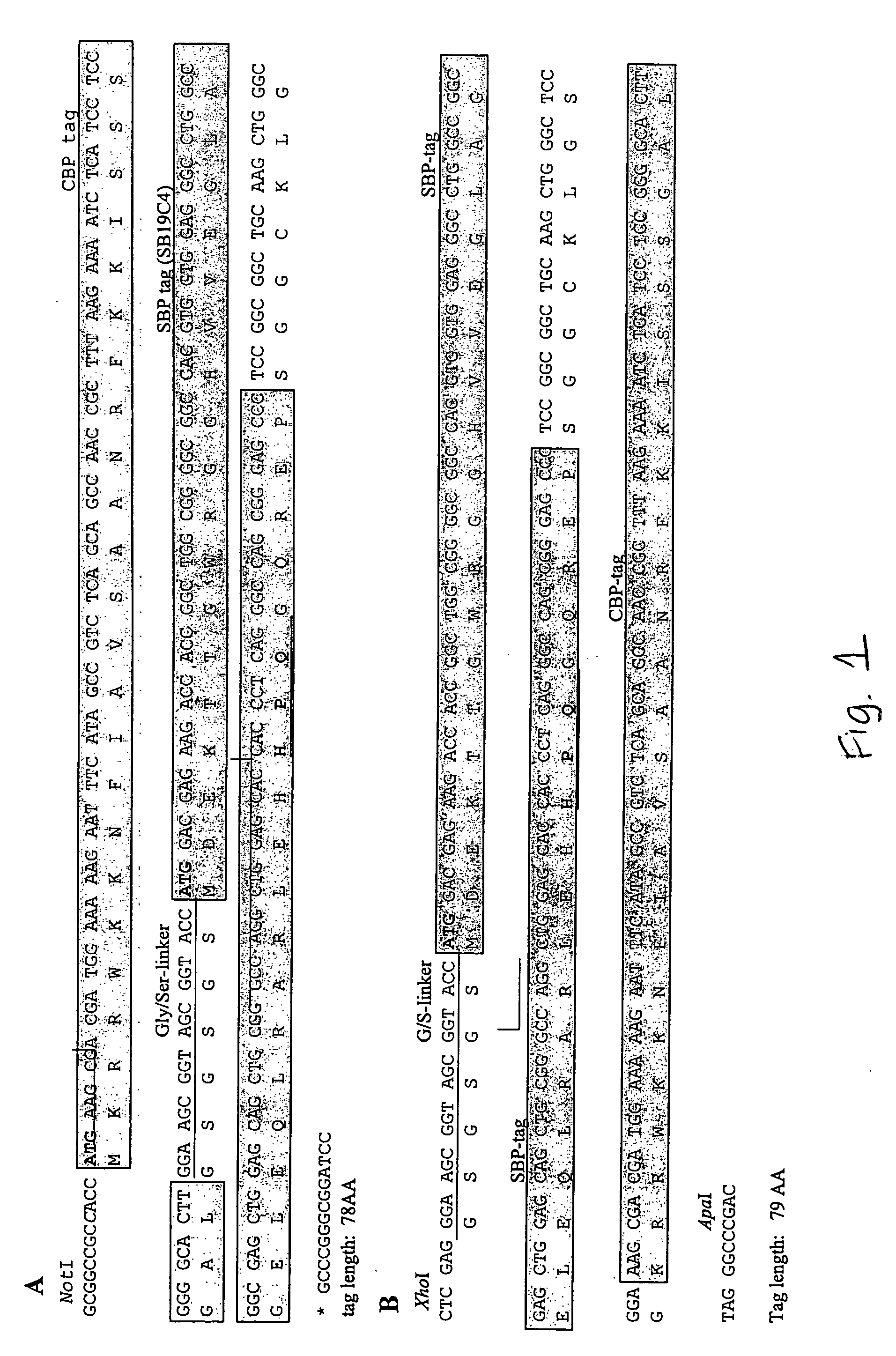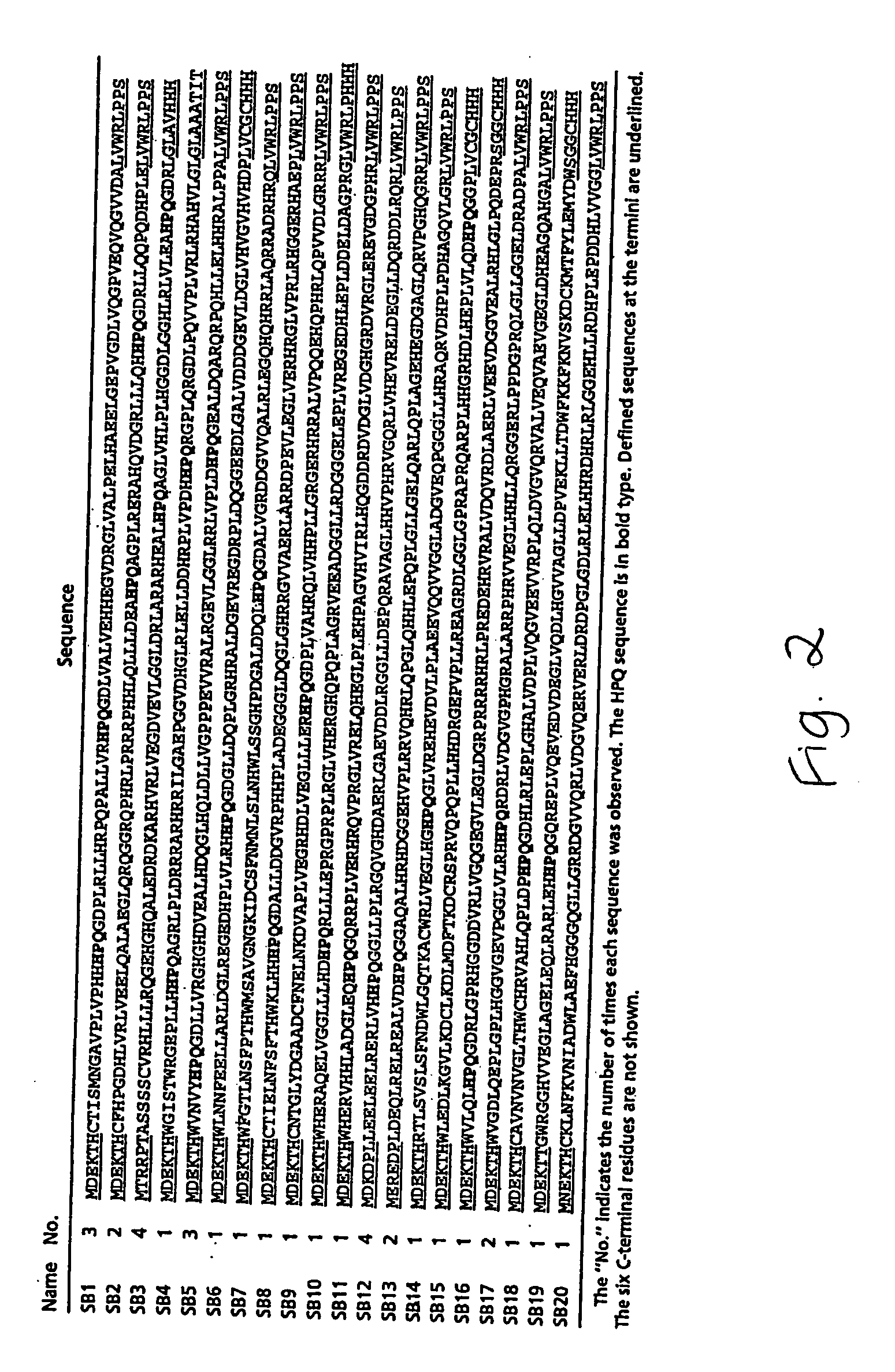Compositions and methods for protein isolation
a technology of protein elution, which is applied in the introduction of vector-based foreign material, depsipeptides, peptide/protein ingredients, etc., can solve the problems of limited utility, difficult to elute protein a tagged protein from igg-columns, and only achieve elution
- Summary
- Abstract
- Description
- Claims
- Application Information
AI Technical Summary
Benefits of technology
Problems solved by technology
Method used
Image
Examples
example 1
Construction of a Tandem Affinity Tag Vector
[0130] The invention provides for vectors that express a tandem affinity tagged protein wherein the affinity tags are positioned either at the C— or N-terminus of a protein of interest. CMV-driven mammalian expression vectors with tandem SBP and CBP tags, that express a protein of interest wherein the tags are positioned either at the N-terminus of the C-terminus of the protein are constructed. Nucleotide and amino acid sequences of SBP and CBP tags are provided in FIG. 1. Polynucleotides and vectors useful for construction of a tandem affinity tagged protein of interest are presented in FIG. 3.
[0131] All buffers described in the following examples are described in Example 3.
[0132] The open reading frames of the transcription factors MEF2a and MEF2c (Myosin Enhancing Factor) were cloned into the CMV-driven expression vectors described above, resulting in addition of CBP and SBP-tags either at the N-terminus or at the C-terminus of the t...
example 2
Expression of a Tandemly Tagged Protein
[0133] A tandemly tagged protein of interest was expressed as follows.
[0134] COS-7 cells were grown in DMEM media with 10% FBS and antibiotics (Pen / Strep) in T175 flasks overnight to 50-60% confluency. Media was aspirated and 25 ml of fresh media was added before transfection. 30 μg of MEF2a-CBP-SBP and 30 ug of MEF2c-FLAG plasmids were diluted in 1.5 ml of serum-free DMEM media. 120 μl of Lipofectamine,2000 was diluted in 1.5 ml of serum-free DMEM media and incubated for 5 min at room temperature. The DNA and LF2000 solutions were combined and incubated for 20 min at room temperature. 3 mls of DNA-lipid complex was added to the cells and incubated at 37° C. for 48 hr. Cells were washed three times with PBS. 5 ml of ice-cold PBS was then added to each flask, and the cells were scraped and transferred to a 15 ml conical tube. The cells were centrifuged at 1500×g for 10 minutes. The PBS was aspirated and 1 ml of lysis buffer (described below) w...
example 3
Purification of a Protein Complex
[0135] A protein complex comprising a tandemly tagged protein of interest and its binding partner was purified according to the following method.
[0136] All steps were performed at 4° C. Approximately 1×107 cells (1×T175 flask) (prepared as described in example 2) were freeze thawed for 3 cycles in 1 ml lysis buffer. The cells were centrifuged to pellet cell debris for 10 min at 16,000 g. The cleared lysates from 4-8 flasks were pooled in a fresh tube. A 5 μl sample was reserved and frozen for Western Blot analysis. To the remainder of the pooled lysate was added EDTA to a concentration of 2 mM, and β-mercaptoethanol to a concentration of 10 mM (4 μl of 0.5 M EDTA, and 0.7 μl of 14.4 M PME, for each 1000 μl of lysate) resulting in the lysates being contained in Streptavidin Binding Buffer.
[0137] 100 μl of Streptavidin beads (50% slurry) for each 1 ml of lysate were washed in SBB to remove the ethanol storage buffer as follows. Beads for multiple 1 ...
PUM
| Property | Measurement | Unit |
|---|---|---|
| volume | aaaaa | aaaaa |
| volume | aaaaa | aaaaa |
| affinity | aaaaa | aaaaa |
Abstract
Description
Claims
Application Information
 Login to View More
Login to View More - R&D
- Intellectual Property
- Life Sciences
- Materials
- Tech Scout
- Unparalleled Data Quality
- Higher Quality Content
- 60% Fewer Hallucinations
Browse by: Latest US Patents, China's latest patents, Technical Efficacy Thesaurus, Application Domain, Technology Topic, Popular Technical Reports.
© 2025 PatSnap. All rights reserved.Legal|Privacy policy|Modern Slavery Act Transparency Statement|Sitemap|About US| Contact US: help@patsnap.com



